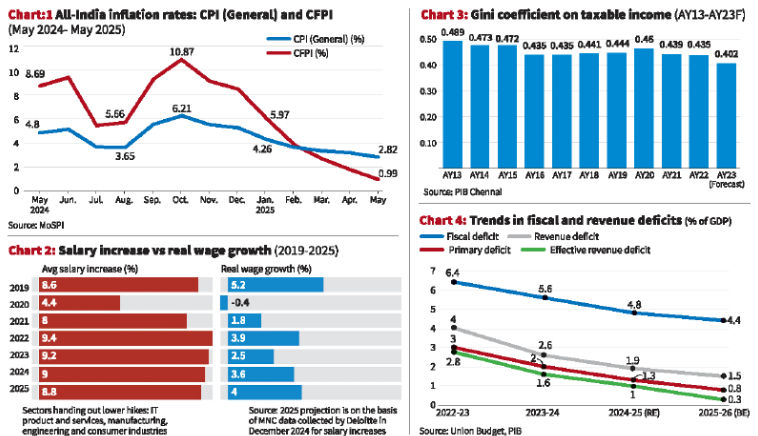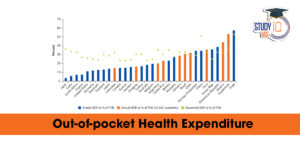Table of Contents
Context: A few weeks back, India’s Finance Ministry declared the Indian economy to be in a “Goldilocks situation”. More astute observers of the Indian economy with historical data question this so-called golden equilibrium, which disguises underlying structural imbalances.
What is meant by a Goldilocks Situation in Economics?
- Goldilocks Situation in Economics typically features:
- Moderate, sustainable growth
- Low and stable inflation
- Supportive monetary conditions that don’t stifle business or consumer spending.
Why did the government claim India is in a Goldilocks Situation?
The Finance Ministry pointed to:
- High GDP growth: 7.6% in FY2024 — among the fastest globally.
- Low headline CPI inflation: Down to 2.82% in May 2025, within RBI’s target range.
- Peaking interest rates: Monetary conditions expected to ease, aiding investment.
- Stable corporate earnings: Indicating strong business performance.
- Recognition of India’s $3.6 trillion economy with resilient macro fundamentals.

Arguments Against the “Goldilocks” Claim
- Volatile food inflation hurting households: Food inflation (Consumer Food Price Index (CFPI)) has often been much higher than the general Consumer Price Index (CPI), Eg, 10.87% in Oct 2024 vs CPI 6.21%.
- Food forms nearly 50% of average household spending, so this erodes real purchasing power despite low overall CPI.
- Stagnant real wage growth: Nominal salary hikes are offset by inflation — e.g., a 9.2% rise in 2023 gave only 5% real growth.
- Some years even saw negative real wage growth.
- Disproportionately affects lower and middle-income groups, curbing consumption demand.
- Persistent income inequality: Gini coefficient improving on paper, but mostly reflects formal taxable income — informal sector realities are worse.
- Post-pandemic recovery is K-shaped — wealthy prosper, poorer households lag.
- Fiscal constraints: Fiscal deficit still high (projected 4.4% in 2025-26) with public debt-to-GDP ~81%.
- High borrowing risks crowding out private investment and limits social sector spending
Way Forward
- Tame food inflation volatility: Strengthen supply chains, buffer stocks, and crop diversification.
- Better weather risk management.
- Boost real wage growth: Support labour-intensive manufacturing.
- Incentivise MSME growth and skill development.
- Address inequality: Expand social protection nets.
- Invest in universal quality healthcare and education.
- Ensure fiscal sustainability: Gradually reduce deficit without cutting essential spending.
- Broaden tax base and improve compliance.
- Promote inclusive growth: Focus on rural infrastructure and job creation in smaller towns.
- Encourage women’s participation in the workforce.


 Out-of-Pocket Health Expenditure, Reason...
Out-of-Pocket Health Expenditure, Reason...
 Treasury Bills (T-bills): RBI Cuts Holdi...
Treasury Bills (T-bills): RBI Cuts Holdi...
 Fisheries Sector in India, Current Statu...
Fisheries Sector in India, Current Statu...

























